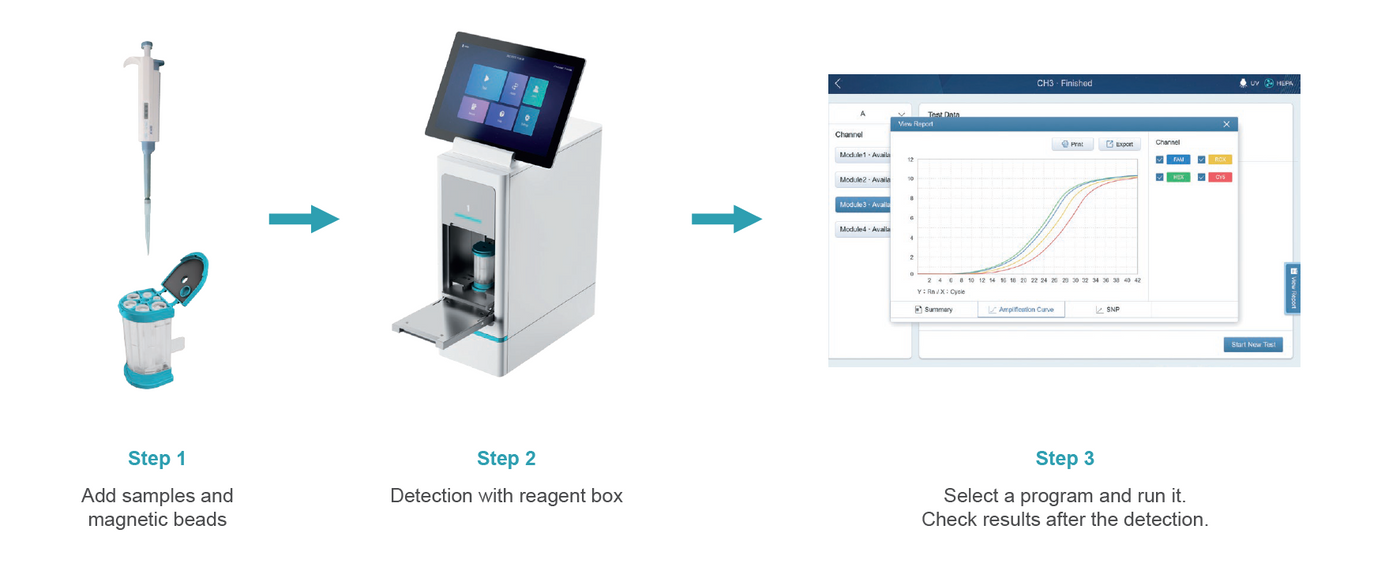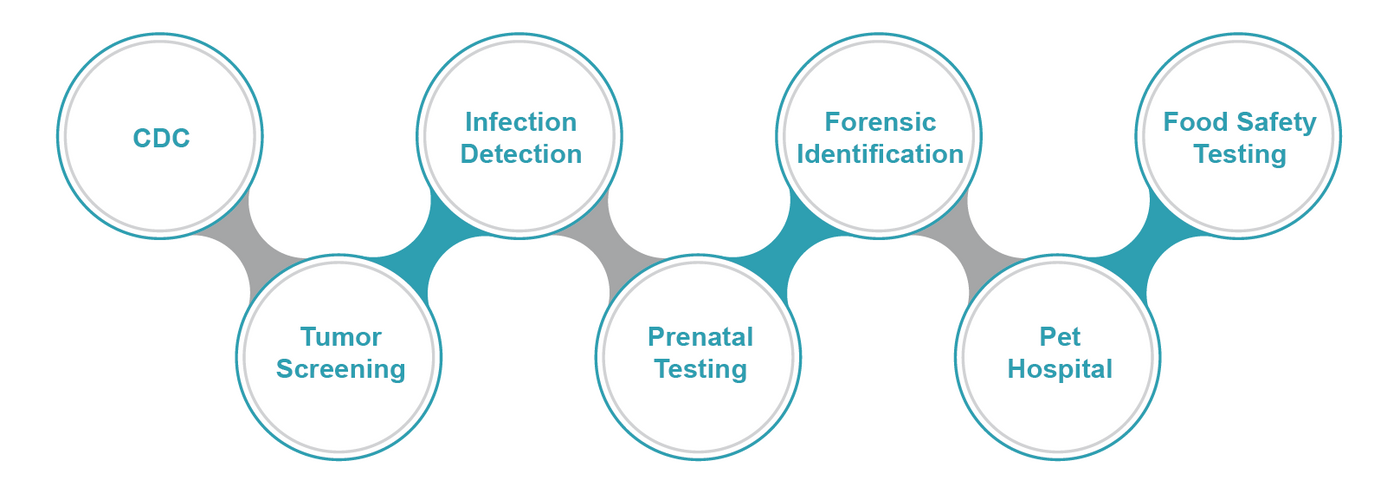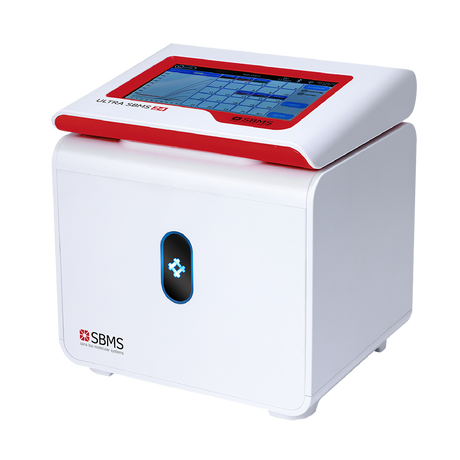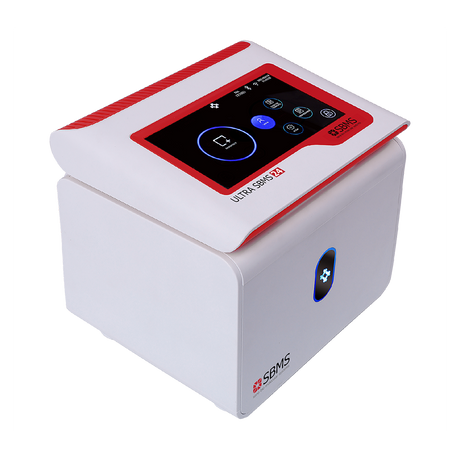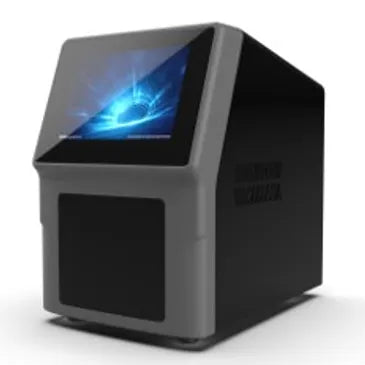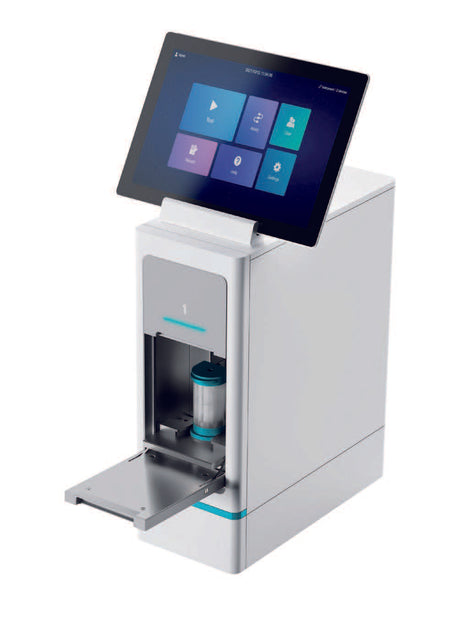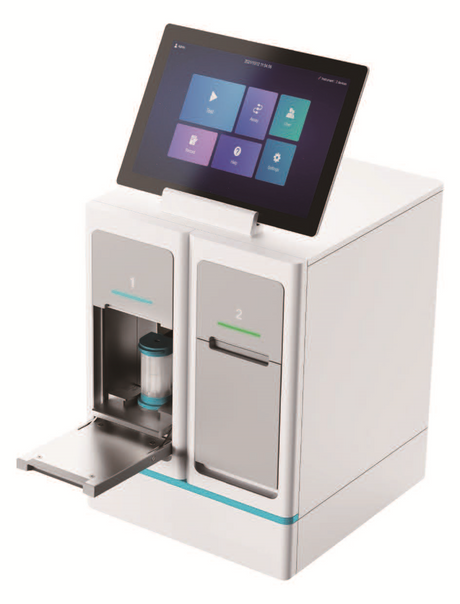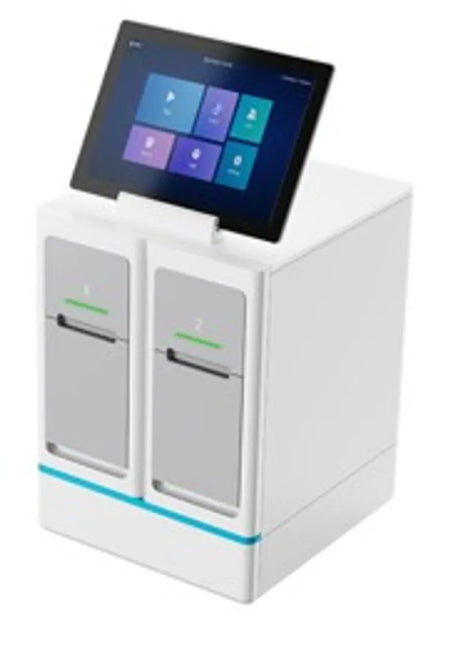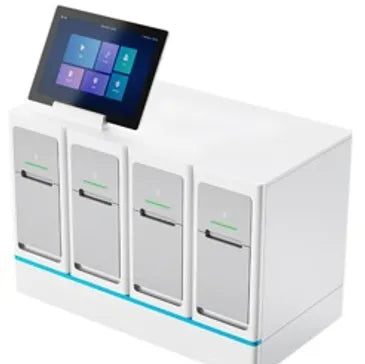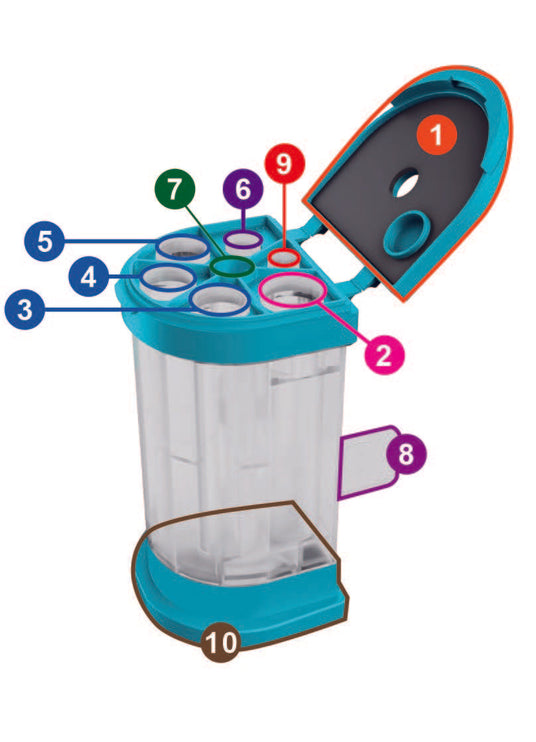
Cartridge In - Results Out!
The cartridge consists of four parts: base, reaction chamber, PCR reaction area and top cover. The function relies on the rotation of the bottom piston valve to achieve the liquid transfer between different chambers.
First, add samples and magnetic beads in the sample chamber to perform the lysis and binding steps of the nucleic acid extraction. Then, the nucleic acid is washed and purified three times in the washing chambers and eluted into the elution chamber.
Finally, the reagents are mixed in the PCR reaction area to perform the PCR amplification reaction.
Item Explanation below
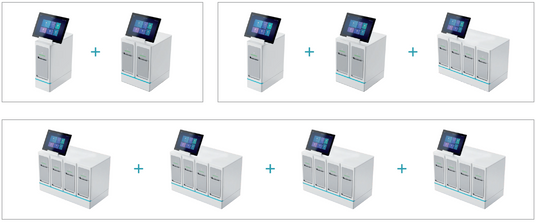
Flexibility & Expandability
Though small and portable, depending on your needs and requirements, you can choose an expandable number of instruments.
Systems can handle 1, 2 or 4 samples at the same time. Various models can be freely combined, and up to 16 samples can be extracted and tested at the same time.
These operate independently without influencing each other.
